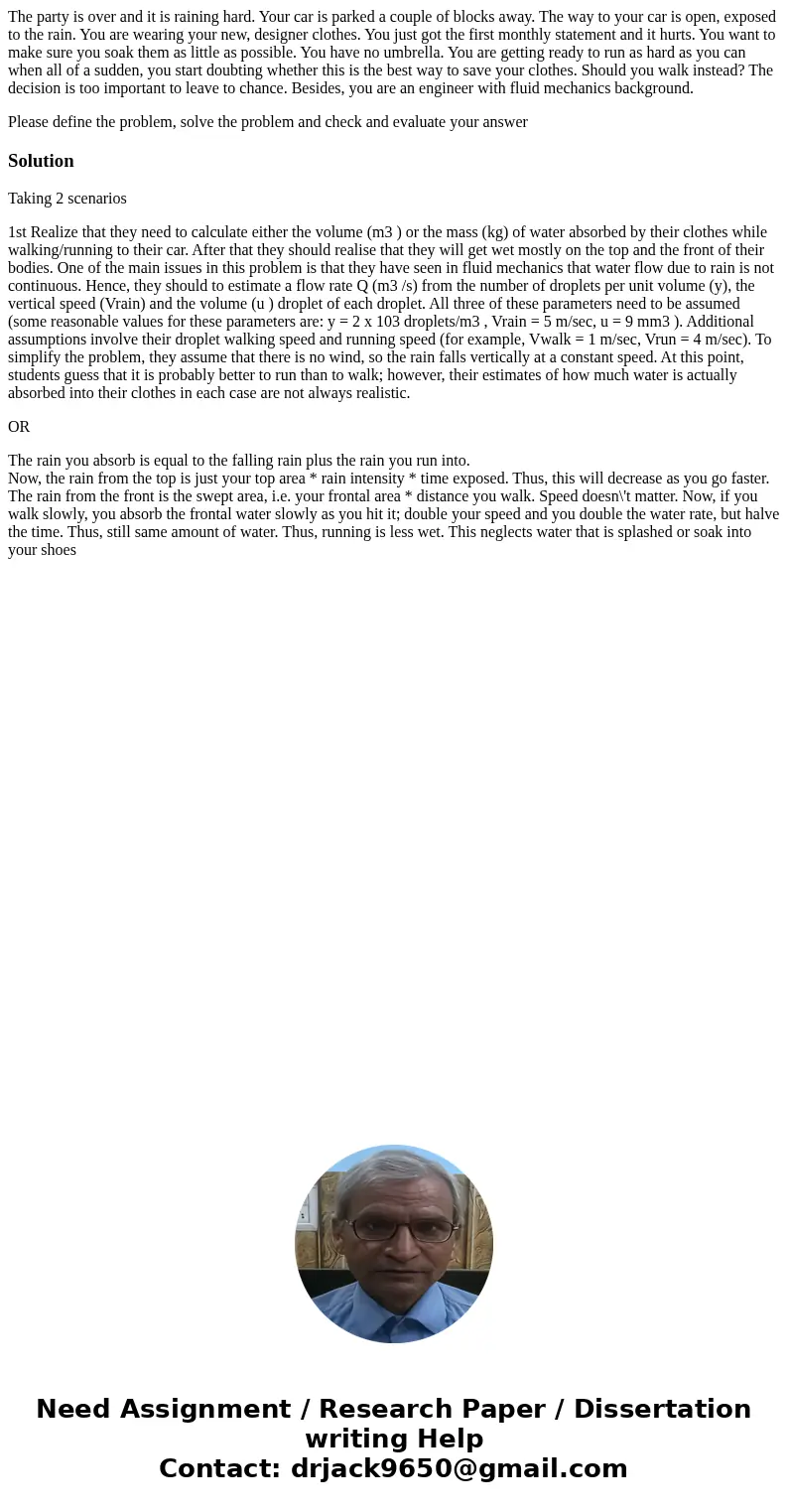The party is over and it is raining hard Your car is parked
The party is over and it is raining hard. Your car is parked a couple of blocks away. The way to your car is open, exposed to the rain. You are wearing your new, designer clothes. You just got the first monthly statement and it hurts. You want to make sure you soak them as little as possible. You have no umbrella. You are getting ready to run as hard as you can when all of a sudden, you start doubting whether this is the best way to save your clothes. Should you walk instead? The decision is too important to leave to chance. Besides, you are an engineer with fluid mechanics background.
Please define the problem, solve the problem and check and evaluate your answer
Solution
Taking 2 scenarios
1st Realize that they need to calculate either the volume (m3 ) or the mass (kg) of water absorbed by their clothes while walking/running to their car. After that they should realise that they will get wet mostly on the top and the front of their bodies. One of the main issues in this problem is that they have seen in fluid mechanics that water flow due to rain is not continuous. Hence, they should to estimate a flow rate Q (m3 /s) from the number of droplets per unit volume (y), the vertical speed (Vrain) and the volume (u ) droplet of each droplet. All three of these parameters need to be assumed (some reasonable values for these parameters are: y = 2 x 103 droplets/m3 , Vrain = 5 m/sec, u = 9 mm3 ). Additional assumptions involve their droplet walking speed and running speed (for example, Vwalk = 1 m/sec, Vrun = 4 m/sec). To simplify the problem, they assume that there is no wind, so the rain falls vertically at a constant speed. At this point, students guess that it is probably better to run than to walk; however, their estimates of how much water is actually absorbed into their clothes in each case are not always realistic.
OR
The rain you absorb is equal to the falling rain plus the rain you run into.
Now, the rain from the top is just your top area * rain intensity * time exposed. Thus, this will decrease as you go faster. The rain from the front is the swept area, i.e. your frontal area * distance you walk. Speed doesn\'t matter. Now, if you walk slowly, you absorb the frontal water slowly as you hit it; double your speed and you double the water rate, but halve the time. Thus, still same amount of water. Thus, running is less wet. This neglects water that is splashed or soak into your shoes

 Homework Sourse
Homework Sourse